
drtreelove
-
Posts
1,890 -
Joined
-
Last visited
Content Type
Profiles
Forums
Downloads
Posts posted by drtreelove
-
-
On 4/30/2021 at 8:37 AM, stubuzz said:
Leaf miners?
Yes.
Attached article from "Home Guides" has some management info.
My approach, start with good soil and water management to build resistance to pests and diseases. Avoid high NPK chemical fertilizers and hard chemistry insecticides. Use COF (mineralized, slow release, complete organic fertilizer), be sure that your COF has a calcium component. )
Spray a botanical pest repellent weekly during pest activity season, like Azadirachtin (neem seed oil extract, repellent, anti-feedant, reproductive disruptor)
บริษัท ผลิตภัณฑ์สะเดาไทย จำกัด : Inspired by LnwShop.com (thaineem.co.th)
How to Control Leaf Miners on a Tomato Plant.docx Bokashi fertilizer.docx
-
Key words here from the OP:
a serious wood chipper
5" or even more.
This is way beyond the capacity of a garden shredder.
(And maybe you don't have anything like Canopy's voracious decomp biology going on)
There are a few Vermeer wood chippers in Thailand, mostly owned by large orchard operations.
Contact Vermeer in Pathum Thani. They may know of an owner in your area who hires out their machine with an operator. But I doubt it. The Vermeer chipper owner that I knew of in Chiang Mai would not hire out or rent outside of their own operations.
-
 1
1
-
-
On 4/10/2021 at 6:31 AM, fondue zoo said:
I'm always curious as to how effective "companion" plants can be in deterring or trapping watermelon pests.
It is certainly something worth consideration. But of course "how effective" will depend on many factors.
Companion Planting with Companion Planting Chart (thespruce.com)
-
On 3/21/2021 at 10:48 PM, bingo5501 said:
Wow, thank you guys my wife and i are starting to grow a few hundred and mixing in with our banana trees so the bug remedy is great to save i am sure we will have issues also. Starting from seed 300 rosewood and 100 teak seeds.
Your rosewood and teak will have different requirements than bananas for growing condititions, soil and water management.
Also, my opinion, don't be led astray by the OPs assumption that "... the insects were sucking the tree's resin" is actually a detrimental pest activity. I believe that the resinous exudation is due to other reasons (maybe beetle borers due to drought stress). and that the unidentified insects "sucking the resin" was only superficial, oportunistic activity from an insect unrelated to the cause of the lesions. Insects attracted to feeding on the exudation from a bacterial wetwood or slime-flux are not necessarily harming the tree.
Instead of wasting time and materials on plastic wrap and moth balls, concentrate on soil health and water management so that your trees can resist pest infestations naturally.
-
- Popular Post
- Popular Post
1 hour ago, fondue zoo said:Does the watermelon take up a lot of the insecticide into the fruit as it grows?
)
Not necessarily, it depends on what exact chemistry is being used and the mode of action.
A systemic insecticide, like a neonicotinoid (imidacloprid for example) can enter the plant through roots or foliage and will translocate throughout the plant tissues, although not always into the fruit.
A contact or barrier insecticide like a pyrethroid (permethrin or bifenthrin) does not enter the plant conductive tissues and therefore will only be ingested if you eat the outer skin or don't wash it.
An organic program botanical (neem/Azadirachtin, or pyrethrum/pyrethrins, for example) would not be much of an issue for toxicity or ingestion. Pyrethrins biodegrade in 12 to 24 hours, and a biological control, like Bt for caterpillars is harmless except to the worms that eat it.
They may also be spraying a fungicide, as melons get powdery mildew or anthracnose and other foliar fungal infections which limit leaf surface and photosynthesis and plant production of sugars.
I don't know the specifics of what is being used and I haven't grown watermelon on a commercial scale, but daily spraying of any pesticide is highly unusual and totally unnecessary. An intelligent, conservative program is designed around complete knowledge of the target pest and it's life cycle, as well as the mode of action and the residual effectiveness of the specific chemistry. Panic and excessive spraying is usually the result of misinformation and unreasonable fear of crop loss.
Kickstart is right about organic program compatible materials needing to be sprayed more often and costing more. Neem products and other botanicals require a weekly application for active infestations, or two week intervals for preventive maintenance. Chemical insecticides usually have a longer period of residual effectiveness and are cheaper, and that's why they are often preferred where environmental contamination and persistance, organic certification or preference is not a consideration.
Its a viscious cycle with high NPK chemical fertilizers that jack the growth but are a pest-magnet. And then pour on the chemistries to try and control the pests that result from lack of natural resistance.
-
 2
2
-
 1
1
-
On 3/23/2021 at 6:23 PM, canopy said:
Good info. I noticed that product is on lazada. I will give it a try.
Another thing to consider is the fertilizer that you use, and how you manage the soil preparation. High Nitrogen chemical fertilizers jack the vegetative growth, but usually do not have a Calcium component, or a full range of micronutrients and trace minerals that are important for building cell wall strength and resistance to disease. Chemical fertilizers can also suppress or kill the all-important beneficial soil biology.
Try Organic Totto bokashi, which has a built-in beneficial microbials, derived from the Japanese EM technology.
Humic acid and a trace minerals source, kelp and/or volcanic or glacial rock dust can also be incorporated for soil building.
Soil preparation and complete fertility, along with good water management should be the basics. Biological fungicide is an extraordinary treatment.
-
On 3/21/2021 at 1:10 PM, drtreelove said:
Its a good question. But I don't think there's a simple answer. Water management is the most important aspect of growing. Exotic plants, which are not native or adapted to a monsoon climate, will always require descrimination on watering amount and fequency. Watering has to be adjusted depending on the season, and even the variations that occur during the season, less during the wet season, more during the dry.
"Thai proven" may indicate that certain plants are grown and are healthy and productive for some growers in some regions, but it does not guarantee that the same trees will do well or even survive under the site-specific growing conditions, soil and water management that you are able to provide on your property.
"The soil drains water very fast ... " "I don't soak the ground around the trees but just water for a few seconds around each tree, and some die. I tried 2 Durians, and they both didn't last," Durian trees are highly susceptible to Phytophthora cinnamomi (root and crown rot), but your statements indicate to me that you are not watering enough during the dry season and your trees are dying from water deficit. " ... water "for a few seconds" will probably not reach all the absorbing roots and may take only a few minutes to dry out. What's the percent organic matter content of your soil? I'll bet it could use improvement, or mulching.
My bad. I was thinking mature plants and that watering for a few seconds wasn't enough. You were talking about watering seedlings for a few seconds, which is totally appropriate.
A soil moisture meter is a beautiful thing.
-
-
- Popular Post
- Popular Post
Consider "damping off", a condition caused by soil borne fungus disease, discussed here previously by IssanAussie and others.
Damping Off: Symptoms, Treatment and Control | Planet Natural
The article from Planet Natural has excellent product recommedations, which I use frequently in California, but I don't believe these bio-fungicides are available in Thailand yet. Actinovate and Mycostop are effective biological fungicides that are popular with cannabis growers and others in the know on organic methods and materials. This is a good description of how biological fungicides work:
"Developed from a naturally occurring bacteria, Streptomyces griseoviridis, Mycostop Biological Fungicide thrives in the root zone of plants. When applied as a drench or spray the dried spores and mycelium of the Streptomyces culture in Mycostop germinate and begin to grow on and around the plant roots. In doing so they create a biological defense against root infecting pathogenic fungi which cause disease such as wilt and root rot.
Mycostop is used by growers for diseases caused by pythium, fusarium, botrytis, alternaria, phomopsis, and to a lesser extent for rhizoctonia and phytophthora. It has particularly good activity against fusarium."
In Thailand, the best product that I know of to suppress soil borne pathogens is Trichoderma harzianum.
But there is more to creating good growing conditions with comprehensive soil fertility and water management, along with specific disease suppression.
I recommend avoiding cutting the roots, which can open wounds for entry of pathogens.
-
 3
3
-
On 3/19/2021 at 1:51 AM, Muhendis said:
Then when the children are finished playing with them they can be used for garden/window-box mulch. Place the sheets of the, by now, defunct Kitty house round the base of your plants and they will slowly rot down keeping weeds at bay etc.
This practice can be detrimental by restricting aeration for absorbing roots and beneficial soil biology, inhibiting water infiltration and nutrient absorption. And the adhesives, waxy coating and print chemicals of some cardboard materials can be phytotoxic.
-
Just now, drtreelove said:
My advise, avoid incorporating fresh manure and raw organic matter like rice straw into the backfill soil.
Compost the manure and straw first, or use it on the soil surface.
And avoid making the backfill soil too rich and greatly different than the underlying, native soil. Or you will create a "bowl effect" where the water sits in the rich soil of the planting hole and doesn't drain readily.
-
On 3/16/2021 at 3:13 AM, Tagged said:
What did you mix in to the dirt in the hole with? Dig 3 times bigger hole than the three need, mix in flower pot/vegetable dirt with buffalo <deleted> and cut rice gras/straw. On top you put rice husk. Some trees need partly shades as well. Give alot of water in the evening instead of the morning and daytime. At least we had goid resoults so far
My advise, avoid incorporating fresh manure and raw organic matter like rice straw into the backfill soil.
Compost the manure and straw first, or use it on the soil surface.
-
-
On 3/18/2021 at 4:47 AM, fredwiggy said:
How does one over water when Thailand has a rainy season with constant rain> I understand if some roots sit in water they can rot, but these trees are all Thai proven. The soil drains water very fast, sitting above the normal level outside of the house property, so it seems the water drains well. I can't tell what's going on under the soil, but I did try the screwdriver test, and some areas it's hard, and some soft, as I mentioned earlier. Has me baffled, as I don't soak the ground around the trees but just water for a few seconds around each tree, and some die. I tried 2 Durians, and they both didn't last, and in the same basic ,well drained spot. Durians grow well here too.
Its a good question. But I don't think there's a simple answer. Water management is the most important aspect of growing. Exotic plants, which are not native or adapted to a monsoon climate, will always require descrimination on watering amount and fequency. Watering has to be adjusted depending on the season, and even the variations that occur during the season, less during the wet season, more during the dry.
"Thai proven" may indicate that certain plants are grown and are healthy and productive for some growers in some regions, but it does not guarantee that the same trees will do well or even survive under the site-specific growing conditions, soil and water management that you are able to provide on your property.
"The soil drains water very fast ... " "I don't soak the ground around the trees but just water for a few seconds around each tree, and some die. I tried 2 Durians, and they both didn't last," Durian trees are highly susceptible to Phytophthora cinnamomi (root and crown rot), but your statements indicate to me that you are not watering enough during the dry season and your trees are dying from water deficit. " ... water "for a few seconds" will probably not reach all the absorbing roots and may take only a few minutes to dry out. What's the percent organic matter content of your soil? I'll bet it could use improvement, or mulching.
-
 1
1
-
-
On 3/16/2021 at 5:22 PM, mtls2005 said:
Could you have the soil, and water supply, analyzed?
Soil analysis is a key factor for addressing plant nutrition, drainage, resistance to pests and diseases, and other factors. Without it we are just guessing. But get a complete analysis as is offered by Logan Labs, referenced in the quoted discussion from 2012.
Some of the information is obsolete; my soils guru Michael Astera died last year in the aftermath of hurricane Laura in Louisiana USA.
The good news is that there is comprehensive Logan Labs soil testing and Rx amendments available now in Thailand. PM to TV member Evolare, or go to bonemeal.net to request soil sampling instructions and a quote for testing and an Rx recommendations.
This is one area for which I would not look for the cheapest service. Good soil analysis is a worthwhile investment. Current university soil testing and especially Do It Yourself kits do not test for all the important factors, CEC and cat-ion balancing, Calcium-Magnesium ratio that makes a big difference for drainage, etc. (high Mg and low Ca creates a tight soil that doesn't drain well. most local soil testing won't tell you that or how to correct it) University soil testing and Lamotte DIY kits do not offer a comprehensive Rx for amendments. And that's where a complete service is essential. Depending on the CEC, pH and other factors, educated choices have to be made on what amendments are appropriate for certain conditions. And of course you have to know what products are available and where to get them, and exactly how much to apply per rai, or per square meter, for smaller plots, or per cubic meter for container soil.
-
TCM cured mine. Along with life style and dietary adjustments for building general health and wellness.
The TCM clinic at Saint Louis Hospital is good.
 M.D. Narong
M.D. Narong
Department: Traditional Chinese Medicine Clinic-
 1
1
-
 1
1
-
-
My new hips are great, thanks. I'm back in action.
Since you asked about scale insects, here's some information, and for others who may be interested. It took me a long time to learn to recognize all the variations, and the difference between soft bodied and armored scale, dead scale bodies and active, feeding adults, nymphs vs adults, etc . And how to distinguish between scale and plant galls or other plant tissue abnormalities, and other insect pests.
Soft scales put out honeydew as they feed, some excrete an extreme amount that drips into puddles on the ground. Ants are usually in the picture, farming the scale and feeding on the honeydew.
Armored scales are more stealth, sometimes they are barely noticible until the plant is in decline with severe dieback.
Here's a key statement on management that applies to a lot of plant pest and disease issues:
"Scales may be a problem in urban environments due to the absence of natural enemies, and plants may be under physiological stress."
That's why I say think first about the growing conditions, soil and water management, avoid physiological stress, like water deficit and drought stress.
You can't just spray an insecticide to control scale insects. They are covered and protected, contact sprays won't work. Organic program compatible methods can be used. Besides good management, horticultural oil can be used during crawler stage (immature stage in scale life cycle where nymphs are crawling around looking for their spot to settle in and feed).
What is the difference between scales and galls?
The best way to distinguish scales from plant galls is to use a fingernail and flip scales over. Galls, when removed with a fingernail, usually break off with bark attached. Some scales are host specific, feeding on only certain plant species, whereas other scales feed on a wide range of plant species.
Reference: hyg.ipm.illinois.edu/pastpest/200407e.html
Soft and Hard Scales: How Do They Differ? (illinois.edu)
-
I haven't seen much rosemary in Thailand, but it is a common plant in the landscapes I have worked with in California. I don't usually see pests or diseases. I don't recall ever having to treat with insecticide or fungicide. But that does't mean it can't happen.
Can those brown bumps be lifted off or are they part of the plant tissue? If lifted off, then it may be a soft-bodied scale and you may be able to start some control by wiping them off with a rag.
In any case, don't think chemical control yet, concentrate on the growing conditions. Cease over-head watering if possible, flood irrigate during dry season infrequently, like once or twice a week when the plant is established. They are drought tolerant and don't like over watering.
Don't over fertilize, which can create excessive vegetative growth and conditons favorable to a pest or disease.
-
 2
2
-
-
-
No I don't think it's scale. It appears to be a fungal canker with discoloration, tissue distortion and sap exudation.
Or the curious thing is the enlarged structure in the center that looks like some kind of strange alien caterpillar . Can you isolate and pick off that structure, or is it part of the plant.
For a plant problem diagnosis question like this, it always helps to show the entire plant and growing conditions if you can. Is it one plant or many? young plants? Newly planted? Are they perhaps over watered? or over-head watered?
"The three fundamentals for successfully growing rosemary are sun, good drainage, and good air circulation."
-
 1
1
-
 1
1
-
-
The Thai Arboriculture Association and the Big Trees project are working to promote good tree care in Thailand.
TAA has associated with the ISA (International Society of Arboriculture). TAA and Big Trees are now training and certifying tree workers and consulting arborists.
https://www.facebook.com/ThaiArboricultureTAA
Big Trees are A Big Deal for Cities | Oraya Sutabutr | TEDxChiangMai - YouTube
-
13 hours ago, djayz said:
No, never. Any suggestions as to where I could get this done in Korat, Isan OR Bangkok?
Because of time constraints, I'll have to go with the organic toto bokashi fertilizer option and have a test done at a later date.
Thank you Dr. Treelove. Your contributions to this, and otherthreads, is much appreciated.
Thanks for note of appreciation.
Soil testing could be a big subject for discussion, because there are different systems and goals, and there are controversies.
There is soil testing available at the ag universities (soil science department), and through Central Laboratories. I've used CMU and MaeJo U in Chiang Mai, and there is Kasetsart U in Bangkok. But they follow a system that only tests for a select list of nutients that are important for yield and the economics of chemical crop production. The system that I prefer and whole-heartedly believe in, is the High Nutrient Density model that tests for a more complete range of plant nutrients, and also addresses not only deficiencies, but imbalances, like the all-important Calcium and Magnesium relationship, Cation Exchange Capacity, micronutrients and trace elements and their importance for plant health, product quality and resistance to pests and diseases.
I only know of labs in the US and in Australia that follow this, like Logan and Brookside Labs in the US and Australian Graeme Sait's Nutri-Tech Solutions. Bonemeal.net in Thailand is now, offering soil testing in line with The Ideal Soil system, (book by Michael Astera).
The COF option is good for starters, like you say for expediency, to get some complete plant nutrition into the soil, while you plan and budget for soil testing and prescription recommendations for amendments.
The OrganicTotto fertilizer is one option and a good example of a Complete Organic Fertilizer. Look at the ingredients and decide if you want to try and make your own, but it is challenging to source all the individual materials and to make a blend with the right proportions.
The Intelligent Gardener by Steve Solomon has a chapter on COF. Hands On Agronomy by Neal Kinsey and The Biological Farmer by Gary Zimmer advocate for the soil test based system for larger scale farming.
-
 1
1
-
-
2 hours ago, djayz said:
In the coming days we're having 40 bales of rice straw delivered (40/bale plus 300 for delivery), which we then use as mulch on the grow beds and around the trees.
Before I lay the straw, is there anything I need to do/prepare?
This'll be the 2nd such mulching they've gotten in 2 - 2.5 years.
Apply soil amendments and irrigate well before laying the mulch.
Have you done soil analysis/lab testing and received an Rx for mineral amendments based on actual nutrient deficiencies found?
If not, you're working blind, but you could add a general purpose fertility blend, like OrganicTotto bokashi fertilzer.
This is a COF (complete organic fertilizer) enhanced with beneficial microbial inoculants, based on the Japanese EM technology pioneered by Dr Higa.
https://www.nanagarden.com/product/114529
The ―Fertile Mulching Method for Established Orchards, Vineyards, and other Perennials: Apply the recommended amendment/fertility mix to the area under the plant‘s canopy, out to and a bit beyond the drip line. Wet the whole area down well, to wash the amendments into the soil. On top of this spread ½ inch of quality compost. Wet that down well, then cover the area with 3" of mulch such as straw or ground bark. The feeder roots of the plant will grow up into the newly fertilized zone. When you wish to apply more fertilizer, rake the top part of the mulch back out of the way, being careful not to damage new feeder roots, apply the new amendments, then rake the mulch back into place. If rock or clay phosphate have been recommended, it is a good idea to aerate the soil out to the dripline, using a tapered-point digging bar to poke a number of holes about 4" deep. Then spread the phosphate and other amendments and irrigate well before mulching. If time and labor are available, the fertility mix may be poured directly into the holes. This will help get the usually immobile phosphate deeper into the soil. A plug-cutting aerator such as is used for lawns will also work. Keep the mulch damp during the growing season if possible. This method works great for re-vitalizing aging fruit trees.
Source: The Ideal Soil: Handbook for the New Agriculture by Michael Astera
The Fizz Test: A simple way to determine if a soil has an excess of base cations that could be extracted by the soil testing solution and cause error in estimating CEC is to pour a small amount of ordinary household vinegar on a sample of dry soil. If the soil fizzes and bubbles, there are excess cations and the soil will need another test in addition to the Mehlich 3 test in order to accurately measure exchangeable bases. Most soils below pH 7 will not fizz or bubble, but some soils, especially calcareous sands which are often used on golf courses, can have an overall pH below 7 and still have undissolved limestone particles.
-
 1
1
-
-
It's God's idea to put seeds in fruit, bananas are included. The photo is of NamWa variety, the tastiest and the only variety that I like to eat. But yes, sometimes you get some with seeds, chomp carefully until you rule out a seed filled banana. Or buy a different variety.
-
 2
2
-
.png.3b3332cc2256ad0edbc2fe9404feeef0.png)
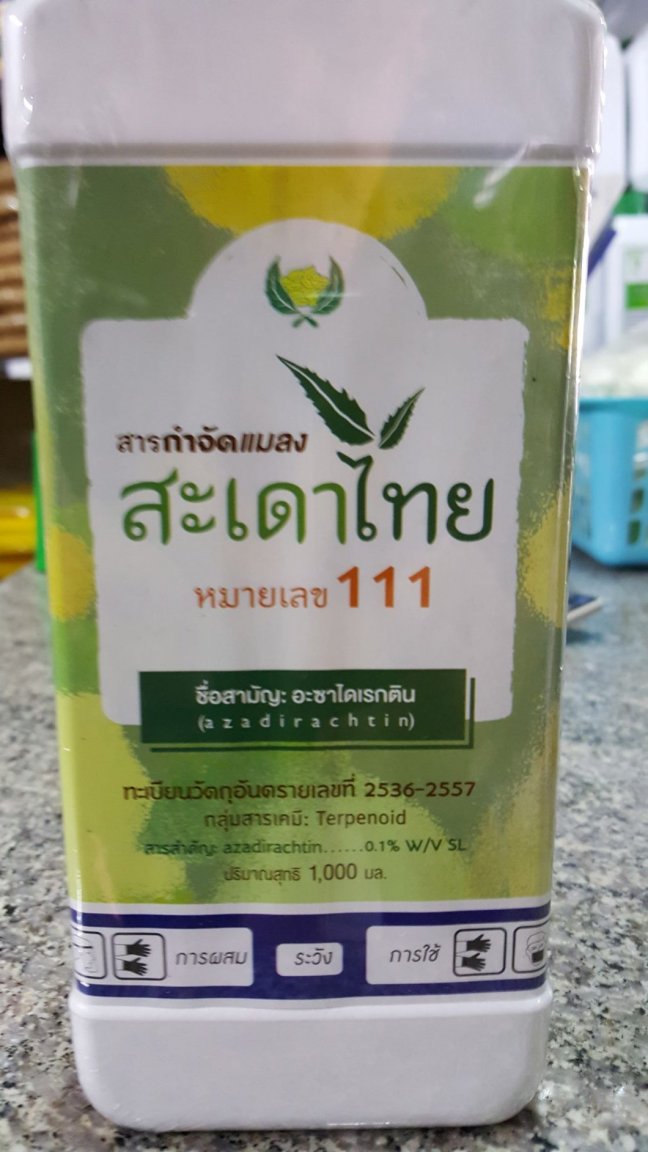
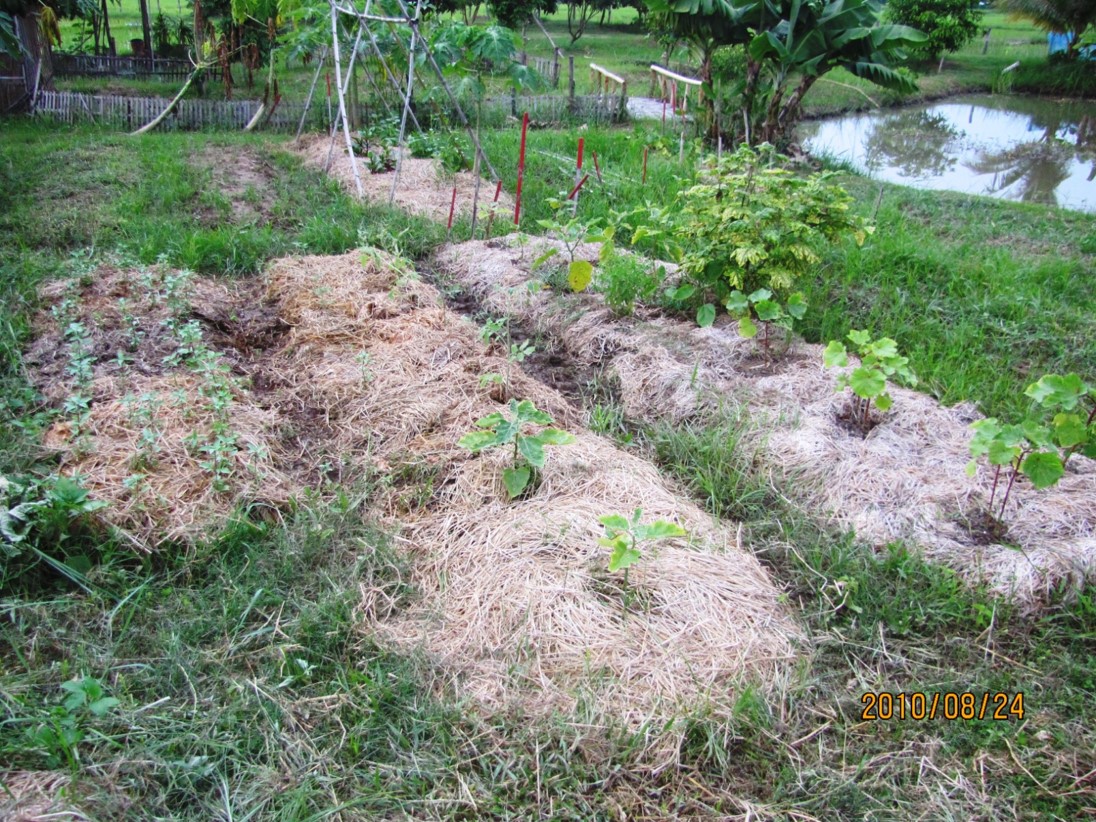

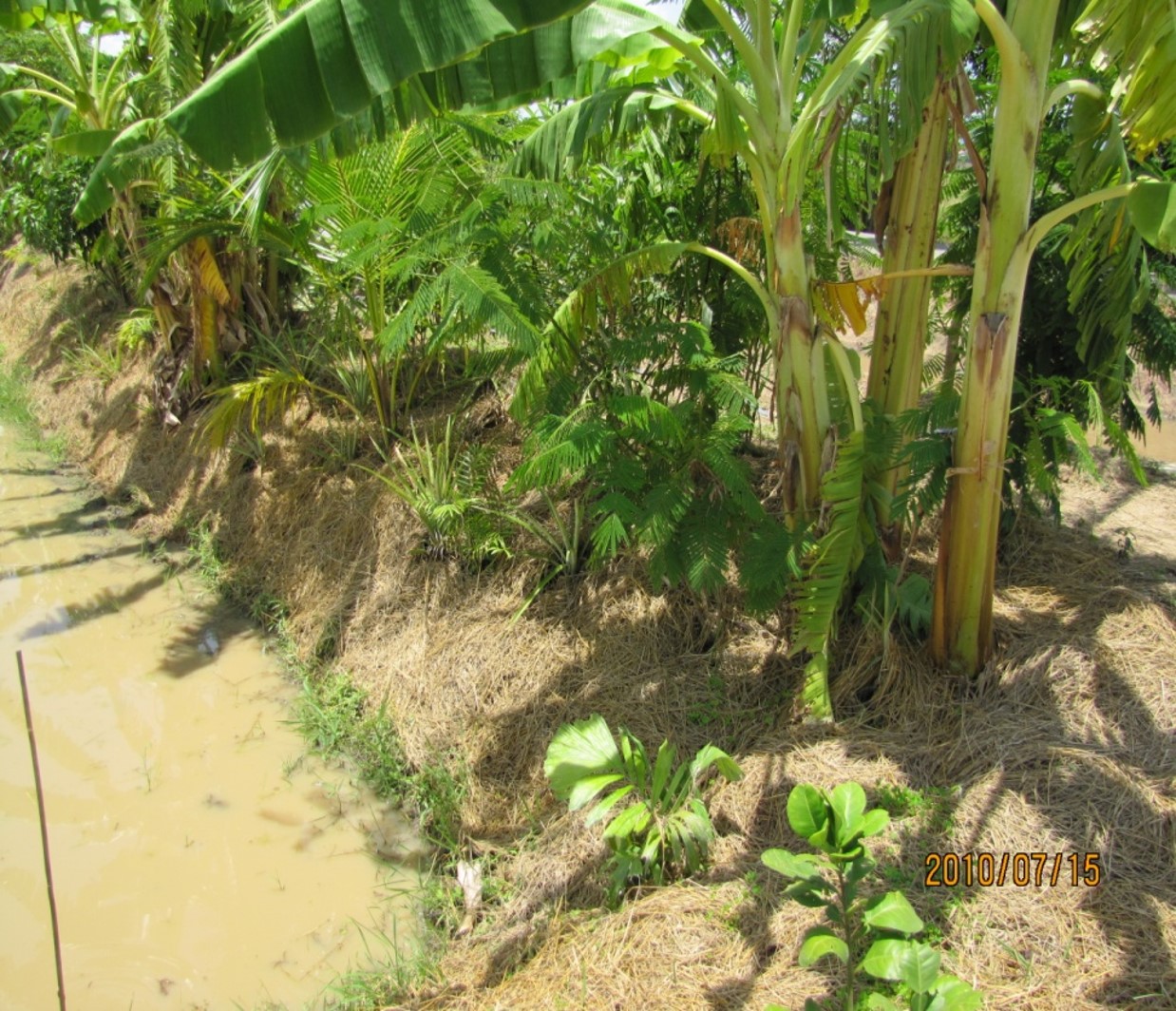
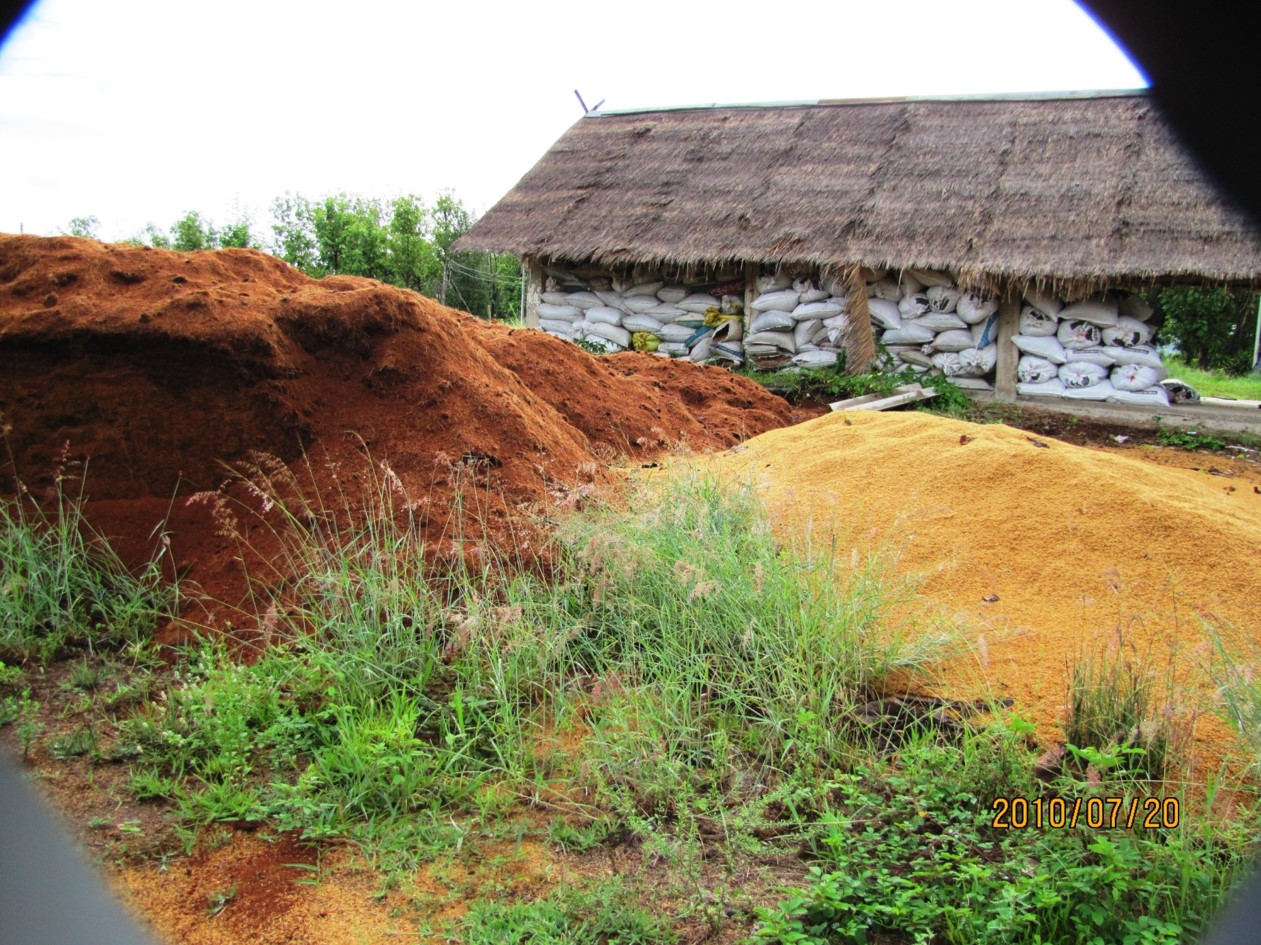


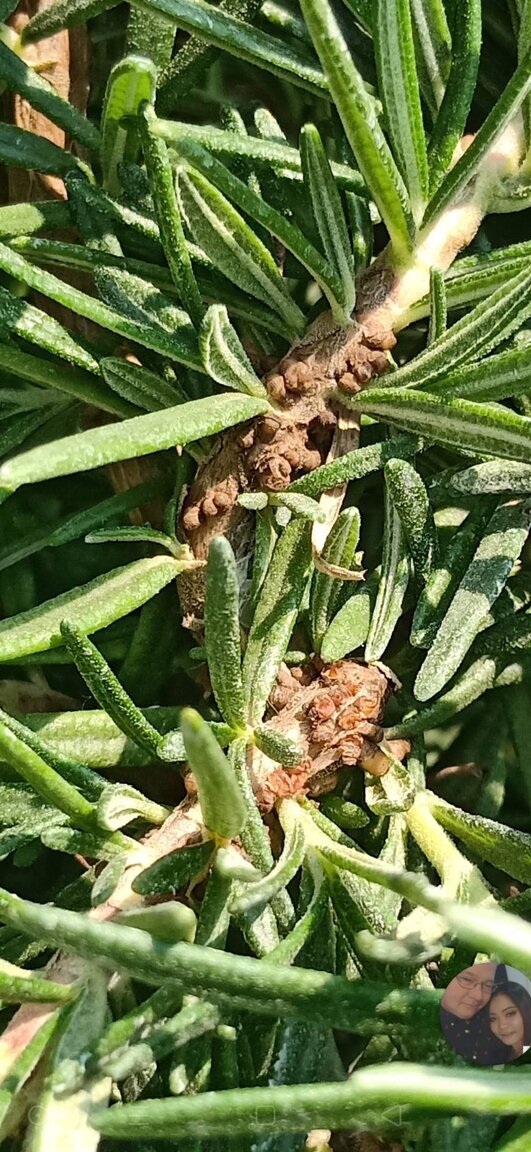
Pervasive leaf parasite
in Plants, Pets & Vets in Thailand
Posted
Potting soil is one thing and complete organic fertilizer is another. Good potting soil is important and the neem meal ingredient should be a good thing, but potting soil usually does not contain complete nutrition, unless formulated with mineral and biological amendments. Use the potting soil but add some COF.
Call or email the contact person at Totto and ask for ordering information. I've never ordered online because we lived near the shop where they make it. But a member from the Farming Forum ordered some recently.
My friends at 'Best Garden State' will have their high quality organic fertilizer blends up and running soon and available through Lazada, a website and their Facebook page.